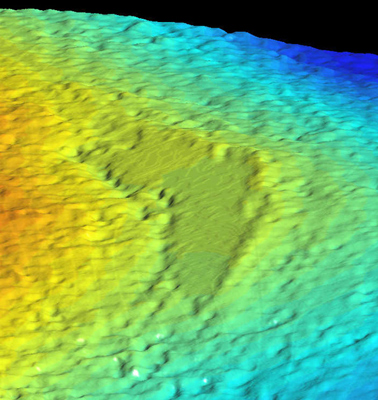Lake Ontario''s human footprints date back to 11,000 yrs, not 100,000 years
 Ottawa, Nov 24 : A new research has suggested that human footprints found a century ago in Lake Ontario, Canada, are 11,000 years old, not 100,000 years, as was indicated by previous research work.
Ottawa, Nov 24 : A new research has suggested that human footprints found a century ago in Lake Ontario, Canada, are 11,000 years old, not 100,000 years, as was indicated by previous research work.
In the fall of 1908, while building a waterworks tunnel east of Hanlan''s Point in Toronto Bay, a work crew came across 100 footprints in a layer of blue clay.
The prints appeared to have been left by people wearing moccasins.
It was an astounding discovery, perhaps the first evidence of human habitation on Lake Ontario, but few recognized its significance at that time.
"It looked like a trail," city inspector W. H. Cross had said about what he saw that day. "You could follow one man the whole way. Some footprints were on top of the others, partly obliterating them. There were footprints of all sizes, and a single print of a child''s foot, three and a half inches," he had added.
At the turn of the 19th century, it was wrongly believed that the clay in which the footprints were found dated to more than 100,000 years.
According to a report in the Daily Star, an expert said that since the shale was there long before man arrived, the source of the prints was not early hunters but more likely "a lobster-like animal."
"Now that we know it was only 11,000 years ago," said archaeologist Ron Williamson. "It''s much more sensible," he added.
The group - likely a family, judging by the different sized prints - could have been walking from a hunting camp on the shore of Lake Ontario to what is now downtown Toronto.
Back then, the shoreline would have been more than a kilometer further south.
The story is told in a new book, Toronto: A Short Illustrated History of its First 12,000 Years, which, unlike most others that look at Toronto''s past, begins at the very beginning, before recorded history.
Tragically, the prints were not preserved. The tunnel workers were in a hurry to complete the job, and simply poured concrete over the clay.
"If they were found to be authentic, it would have been the only discovery of footprints of the first people of Ontario," said Williamson, who edited the book and wrote the chapter on pre-European contact. "It would have been amazing," he added. (ANI)